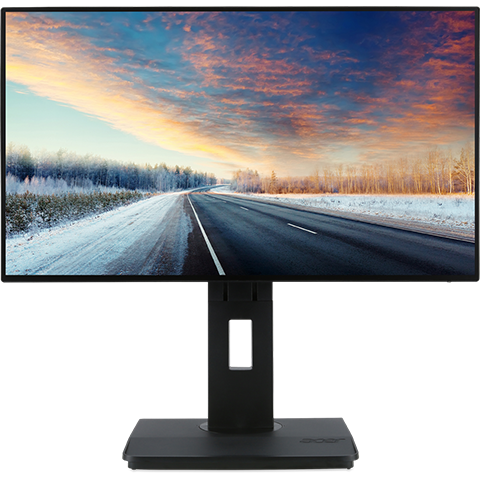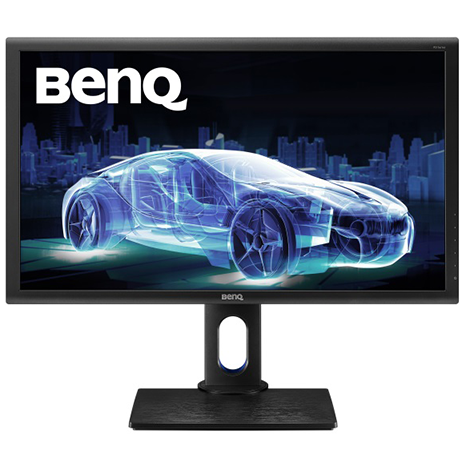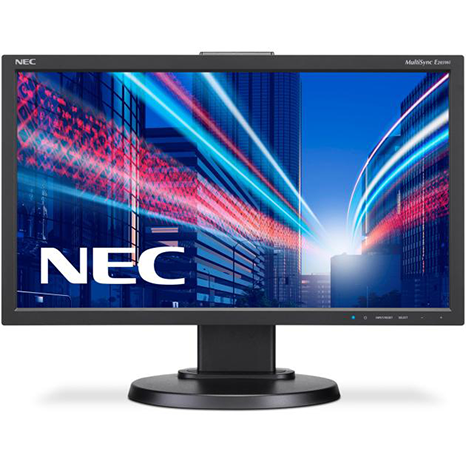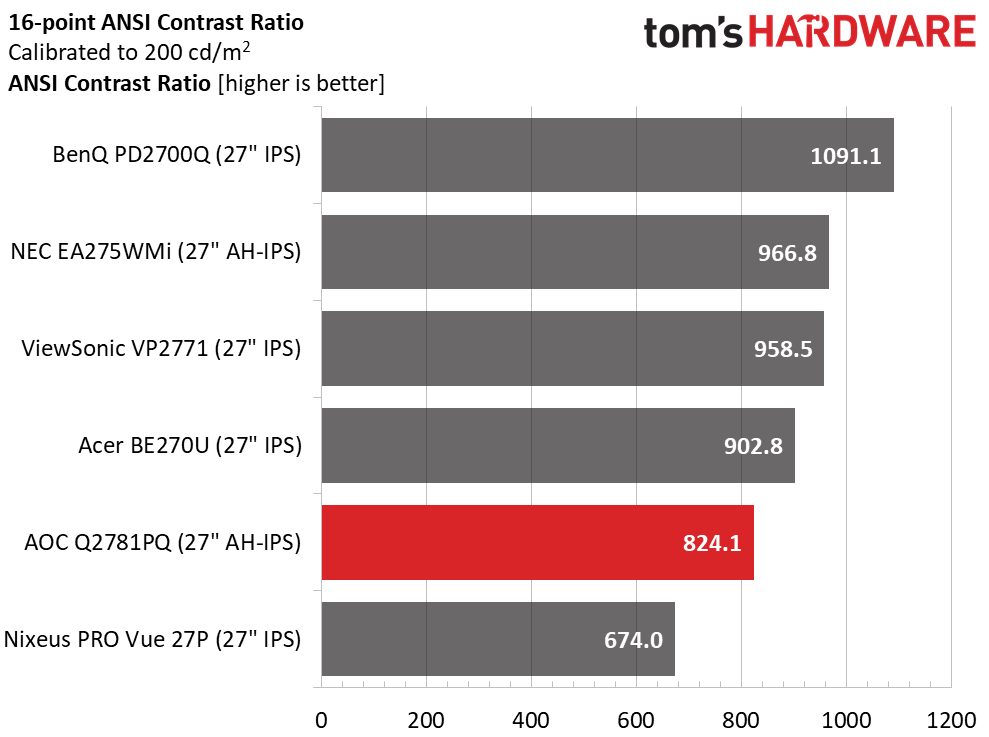AOC Q2781PQ IPS/QHD Monitor Review
Why you can trust Tom's Hardware
Brightness & Contrast
To read about our monitor tests in depth, please check out Display Testing Explained: How We Test Monitors and TVs. Brightness and Contrast testing is covered on page two.
Uncalibrated – Maximum Backlight Level
Today we have a broad range of prices represented by our comparison monitors. All are sRGB, 27”, QHD screens, but some have a larger feature set than the AOC Q2781PQ. We tried to include displays that exhibit similar performance though they may not all be on the same shopper’s list. They are NEC’s EA275WMi, ViewSonic’s VP2771, Acer’s BE270U, BenQ’s PD2700Q, and Nixeus’ PRO Vue 27P.
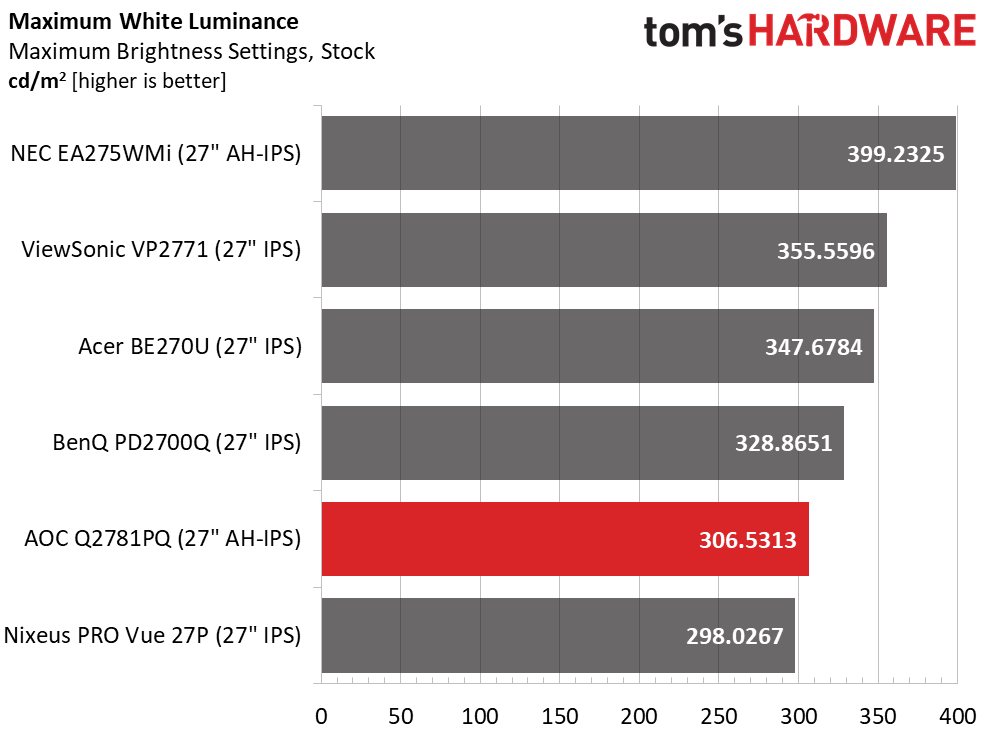
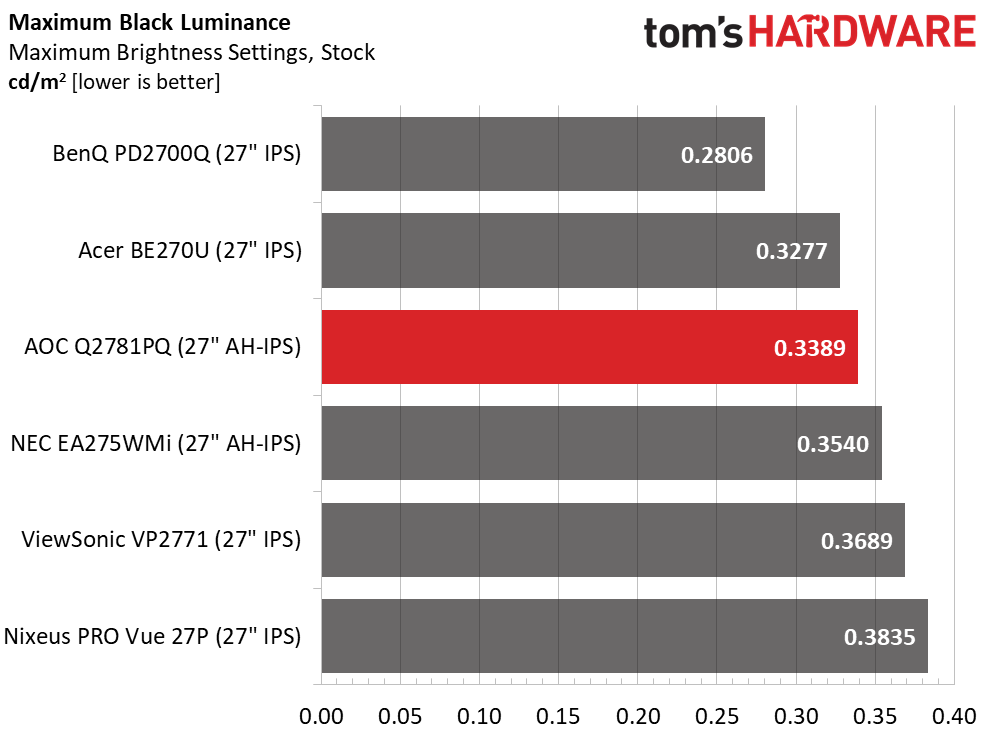
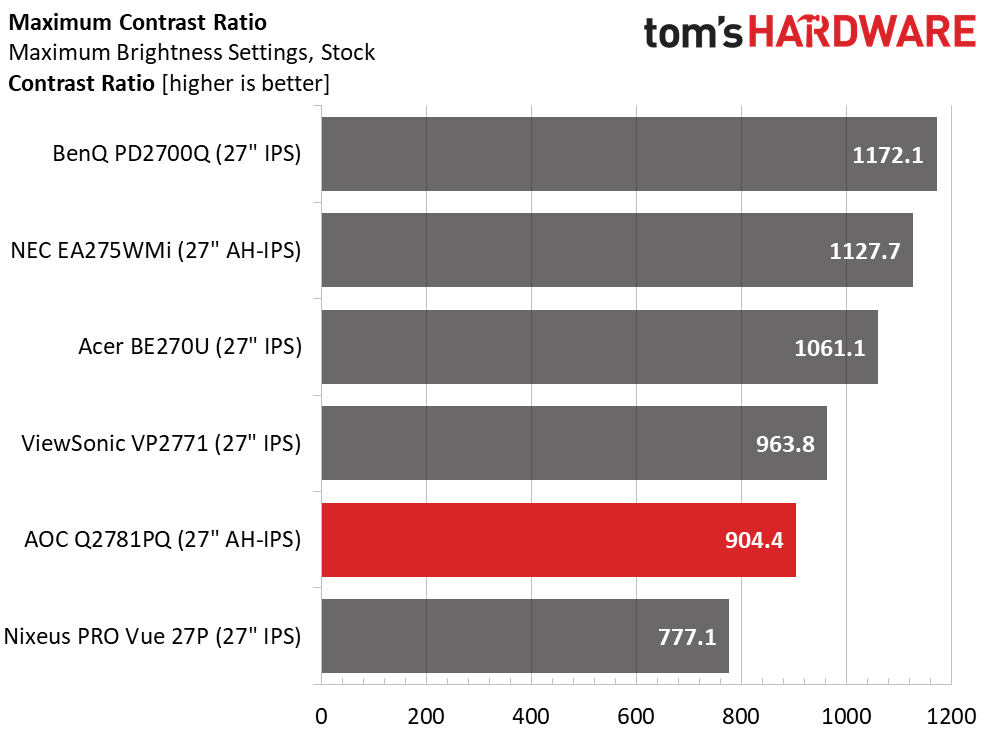
AOC claims 350cd/m2 for the Q2781PQ, but we couldn’t quite get there in any of the picture modes with the brightness slider maxed. This isn’t a big deal, because there’s still plenty of output for the monitor’s intended purpose. And there’s no need for the headroom required by uniformity compensation or a backlight strobe.
Black levels are a bit high but still good enough for a third-place finish. Overall contrast is lower, however, at 904.4:1. Coupled with a dark default gamma, the image seems a tad murky at first, but once we make a few tweaks, it looks significantly better. Color is nicely saturated in either case.
Uncalibrated – Minimum Backlight Level
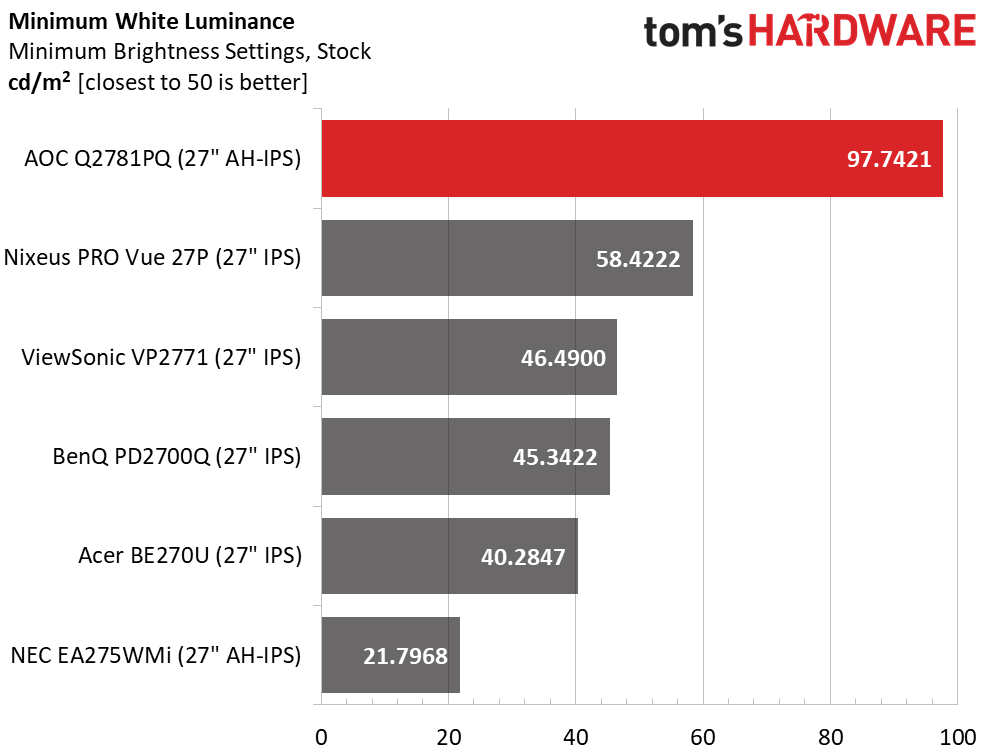
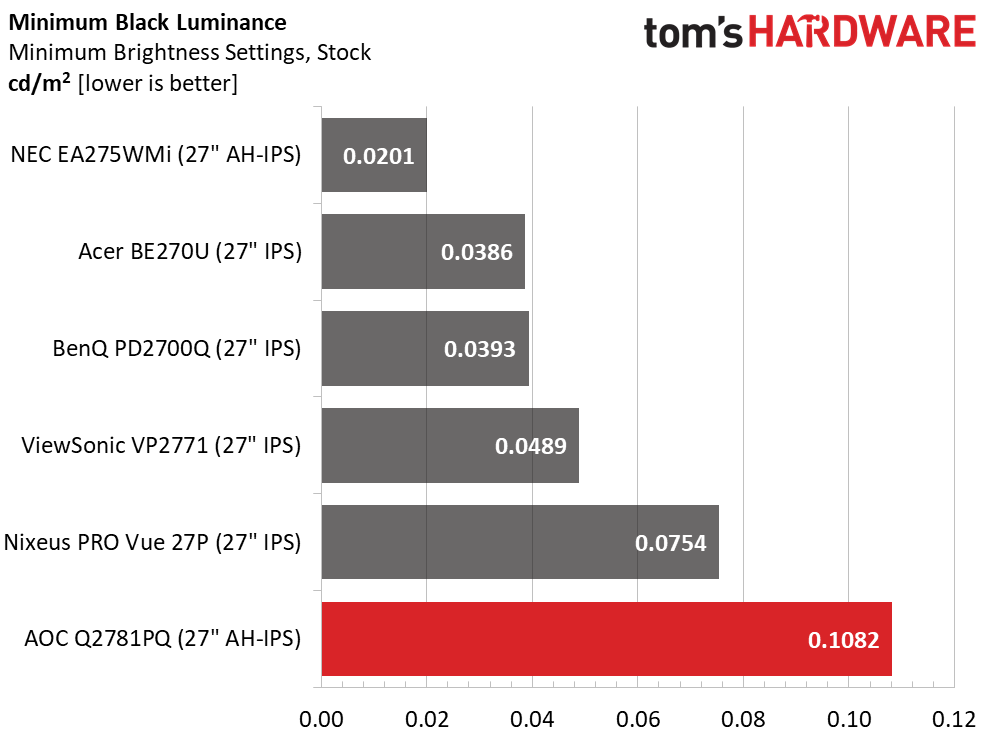
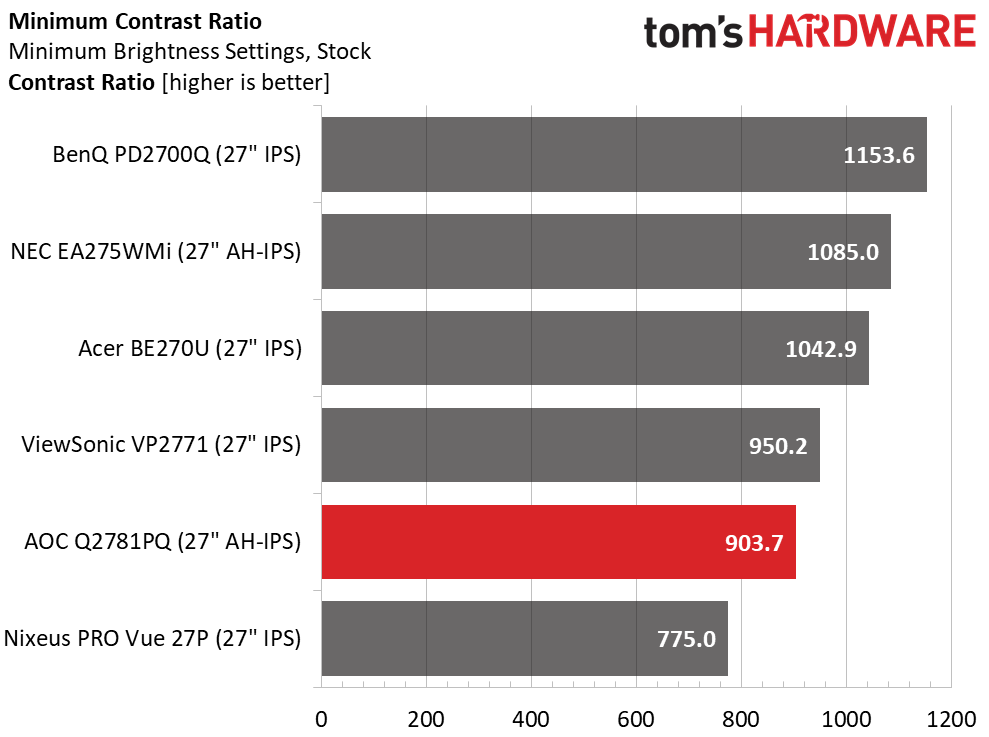
The backlight won’t quite drop to our preferred 50cd/m2 level. But there is an upside. With a smaller brightness range, each click of the slider yields a very small change. When is this useful? When trying to level-match multiple screens. Having two or three monitors where one is even slightly off in output can be a significant distraction. With a fine-resolution control like the Q2781PQ, you can get levels precisely in line. And as expected, contrast stays consistent at all outputs.
After Calibration to 200cd/m2
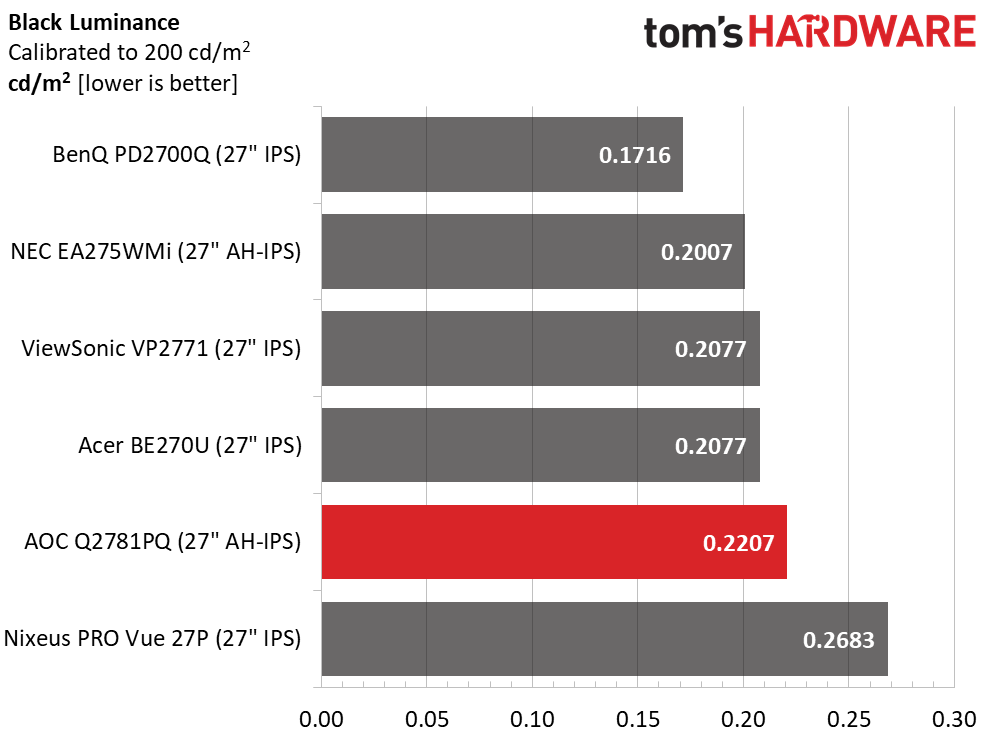
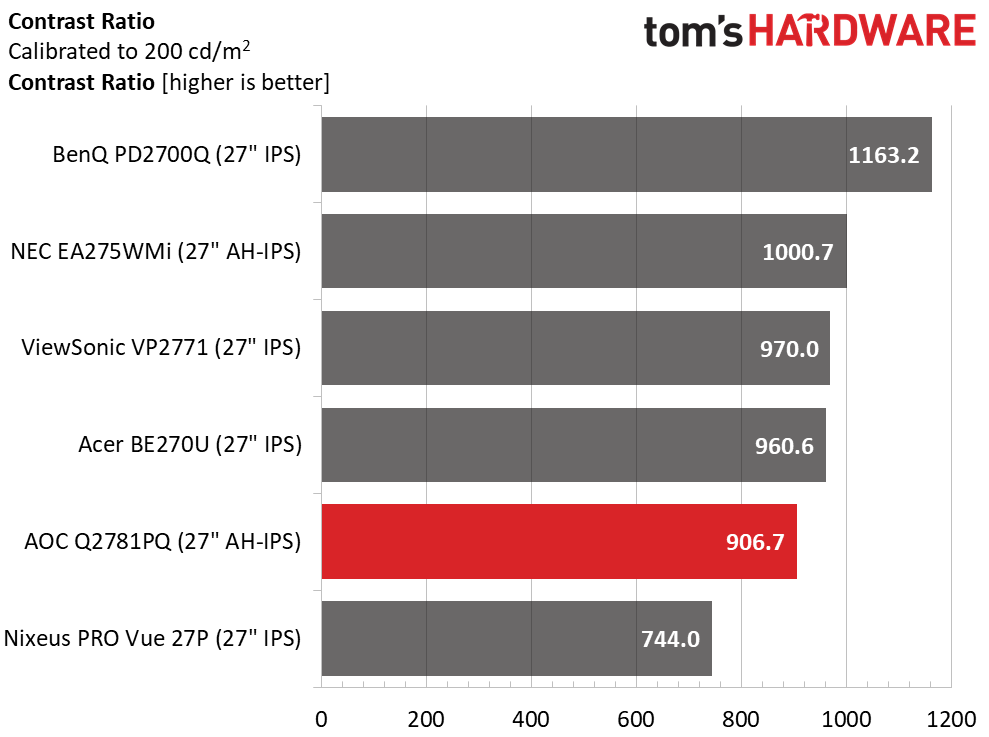
The User color temp mode features sliders that start at center-range. This makes it easy to dial in grayscale without sacrificing contrast. We also set gamma to the second preset to bring tracking almost perfectly in-line with the 2.2 standard. All of that means sequential contrast remains rock-solid at 906.7:1. It’s not a great score but it shows consistency and decent panel quality. And it is closer to the rest of the group than the Nixeus display.
ANSI Contrast Ratio
Our Q2781PQ sample doesn’t have any significant uniformity issues, but some slightly brighter black squares in the checkerboard pattern contribute to a lowered ANSI result. It keeps the monitor in fifth place, but we’d like to see just a bit more contrast in general. The grayscale, gamma, and color measurements on the next page help bring it up a few notches in the comparison.
Get Tom's Hardware's best news and in-depth reviews, straight to your inbox.
MORE: Best Gaming Monitors
MORE: Best Professional Monitors
MORE: How We Test Monitors
MORE: How To Choose A Monitor
MORE: All Monitor Content
Current page: Brightness & Contrast
Prev Page OSD Setup & Calibration Next Page Grayscale, Gamma & Color
Christian Eberle is a Contributing Editor for Tom's Hardware US. He's a veteran reviewer of A/V equipment, specializing in monitors. Christian began his obsession with tech when he built his first PC in 1991, a 286 running DOS 3.0 at a blazing 12MHz. In 2006, he undertook training from the Imaging Science Foundation in video calibration and testing and thus started a passion for precise imaging that persists to this day. He is also a professional musician with a degree from the New England Conservatory as a classical bassoonist which he used to good effect as a performer with the West Point Army Band from 1987 to 2013. He enjoys watching movies and listening to high-end audio in his custom-built home theater and can be seen riding trails near his home on a race-ready ICE VTX recumbent trike. Christian enjoys the endless summer in Florida where he lives with his wife and Chihuahua and plays with orchestras around the state.
-
SteveRNG I get why people call out the monitor makers when they call a monitor bezel-free and it's not. And I get why people who do multiple-monitor gaming would want bezel-free. But until the display actually has NO bezel, does bezel thickness matter at all? It seems that if there is any bezel, it might as well be an inch wide and help prevent backlight bleed.Reply -
dstarr3 Reply19819450 said:I get why people call out the monitor makers when they call a monitor bezel-free and it's not. And I get why people who do multiple-monitor gaming would want bezel-free. But until the display actually has NO bezel, does bezel thickness matter at all? It seems that if there is any bezel, it might as well be an inch wide and help prevent backlight bleed.
Generally, I agree. There's no functional point if there is more than zero bezel thickness. But I'll admit, a thin bezel does just look better aesthetically. If I had to choose between two monitors that were equal in every way, except one had a thinner bezel, I'd go with the thinner bezel. -
drwho1 To me not having speakers is a plus since I like to use my own set of speakers... real speakers. Overall I will keep this in mind when ready to upgrade.Reply -
2Be_or_Not2Be I personally would rather have downward-facing inputs. It puts less stress on the connector.Reply -
2Be_or_Not2Be Reply19821946 said:hoping for an ips 120hz 4k in the 24 and 27 brackets
Not sure I would want 4K in a 24" monitor. That would make for some really tiny text/icons. I would only go with 4K in 27"/28" and above sizes. -
photonboy 2BE_OR_NOT2BE,Reply
I'm not sure I agree that "downward-facing inputs" are better. With this monitor the cables can come from the back of the desk like you would a DVD player. With the downwards style you'd be forced to bend the cable more thus putting MORE stress on the connector not less.
Personally, I prefer to have a mount that lets you hide and tie off the video cable in the rear, middle area.
